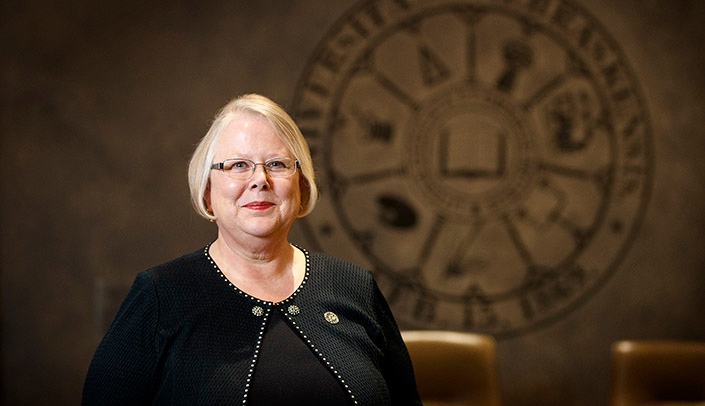State-funded financial aid is a critical ingredient in ensuring affordable access for thousands of University of Nebraska students, Interim President Susan Fritz, Ph.D., said in testimony Friday to the Nebraska State Legislature’s Education Committee.
Dr. Fritz was among the invited testifiers for a hearing on how the state’s Education Improvement Fund should be allocated to best advance Nebraska’s educational priorities. The fund supports the Nebraska Opportunity Grant (NOG) program, the state’s only need-based financial aid program for postsecondary education.
The NOG program is providing $19 million this year to low-income Nebraska students attending colleges and universities in the state. A little more than $10 million of that is going to students across the four NU campuses.
“Those dollars are crucial in removing barriers and making higher education more affordable and accessible for Nebraska students,” Dr. Fritz said, crediting lawmakers for directing general fund and lottery dollars toward the aid program.
“Accessibility has always been core to the university’s mission. Keeping the doors of higher education open for our young people will be critical as we work together to address the urgent workforce challenges facing our state.”
Dr. Fritz noted that the financial needs of Nebraska students exceed the available dollars. In 2017-18, 13,000 of 36,000 eligible Nebraskans received NOG funding. About 4,500 of 12,000 eligible University of Nebraska students received funding.
The average award for a NOG recipient at the university is about $2,000, Dr. Fritz told committee members. “Our students would tell you unequivocally that a grant of that size makes an enormous difference.”
Colleges and universities must do their part in keeping education affordable, Dr. Fritz said. Tuition costs at the University of Nebraska are well below the peer averages, and each university campus is working to improve retention and timely graduation rates. The university also will continue to leverage campus, federal and private sources to mitigate costs to the greatest extent possible for students and families, she said.
“The state’s aid program is a critical component,” she said. “The Nebraska Opportunity Grant program sends a message to our young people that the state of Nebraska cares about their success, that it is invested in their upward mobility, and that it wants to help them become engaged and productive citizens who contribute to our communities and economy.”
